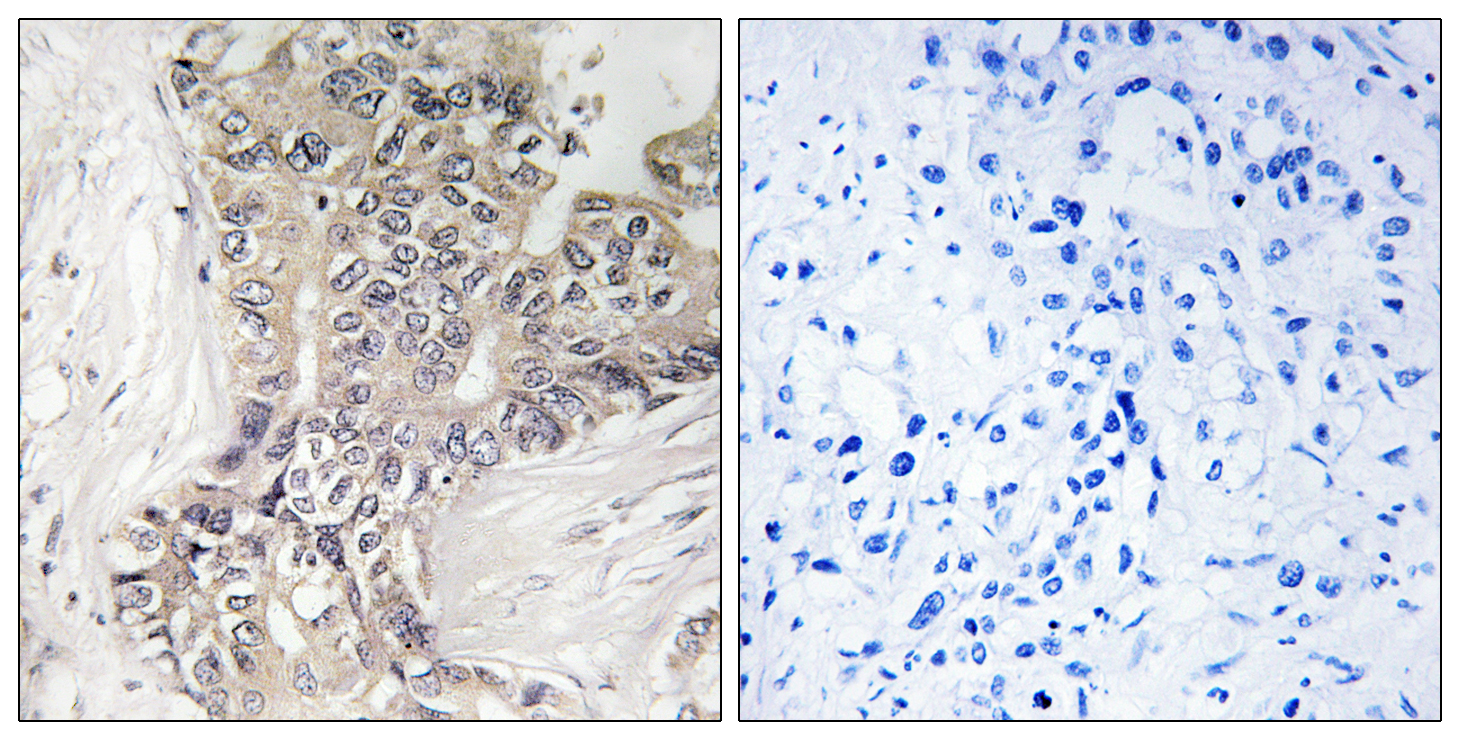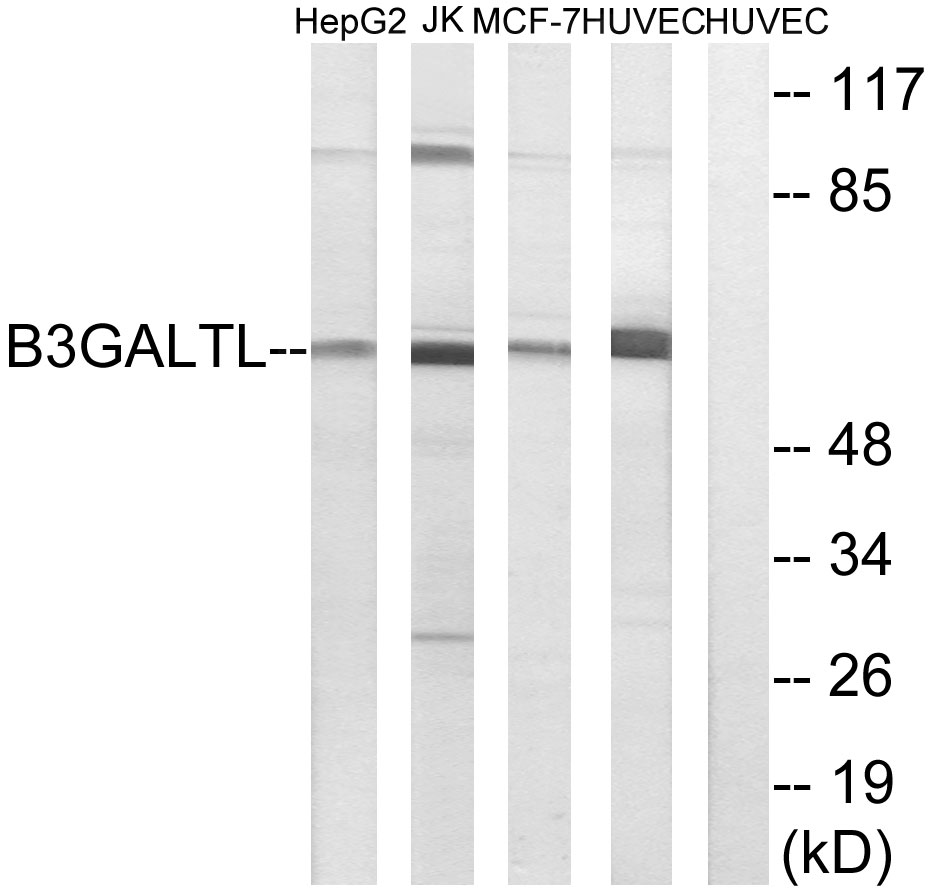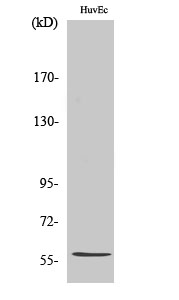产品名称
β-1,3-Gal-TL Rabbit Polyclonal Antibody
别名
B3GALTL; B3GTL; Beta-1; 3-glucosyltransferase; Beta3Glc-T; Beta-3-glycosyltransferase-like
蛋白名称
Beta-1,3-glucosyltransferase
存储缓冲液
Liquid in PBS containing 50% glycerol, 0.5% BSA and 0.02% New type preservative N.
Human Gene Link
http://www.ncbi.nlm.nih.gov/sites/entrez?db=gene&term=145173
Human Swissprot No.
Q6Y288
Human Swissprot Link
http://www.uniprot.org/uniprotkb/Q6Y288/entry
Mouse Swissprot No.
Q8BHT6
Mouse Swissprot Link
http://www.uniprot.org/uniprot/Q8BHT6
免疫原
The antiserum was produced against synthesized peptide derived from human B3GALTL. AA range:449-498
特异性
β-1,3-Gal-TL Polyclonal Antibody detects endogenous levels of β-1,3-Gal-TL protein.
稀释度
WB 1:500 - 1:2000. IHC 1:100 - 1:300. ELISA: 1:40000.. IF 1:50-200
宿主
Polyclonal, Rabbit,IgG
背景介绍
The protein encoded by this gene is a beta-1,3-glucosyltransferase that transfers glucose to O-linked fucosylglycans on thrombospondin type-1 repeats (TSRs) of several proteins. The encoded protein is a type II membrane protein. Defects in this gene are a cause of Peters-plus syndrome (PPS).[provided by RefSeq, Mar 2009],
组织表达
Widely expressed, with highest levels in testis and uterus.
细胞定位
Endoplasmic reticulum membrane ; Single-pass type II membrane protein .
功能
disease:Defects in B3GALTL are the cause of Peters-plus syndrome (PPS) [MIM:261540]. PPS is an autosomal recessive disorder characterized by anterior eye-chamber abnormalities, disproportionate short stature, developmental delay, characteristic craniofacial features, cleft lip and/or palate.,function:O-fucosyltransferase that transfers glucose toward fucose with a beta-1,3 linkage. Specifically glucosylates O-linked fucosylglycan on TSP type-1 domains of proteins, thereby contributing to elongation of O-fucosylglycan.,online information:GlycoGene database,pathway:Protein modification; protein glycosylation.,similarity:Belongs to the glycosyltransferase 31 family.,tissue specificity:Widely expressed, with highest levels in testis and uterus.,
纯化
The antibody was affinity-purified from rabbit antiserum by affinity-chromatography using epitope-specific immunogen.



